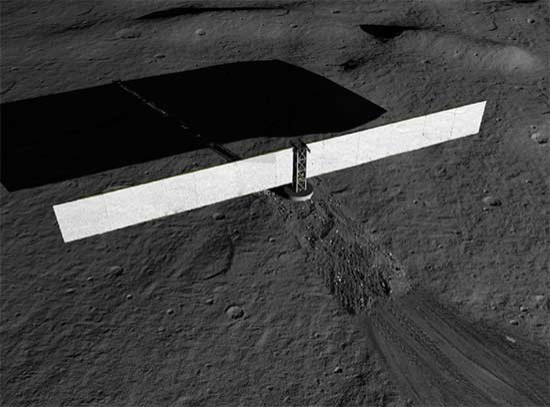Moon, Mars Could Give Nuclear Energy a Better Platform

While Nuclear energy is very controversial on Earth and may never fully catch on for safety reasons, it may see a new platform for its power on Mars and the moon.
At this fall's 242nd National Meeting & Exposition of the American Chemical Society (ACS), researchers revealed how nuclear energy could be used on Mars and the moon. The nuclear energy, contained in a small, suitcase sized reactor, could help power bases on Mars and the moon and perhaps other places in outer space.
Leading the research is James E. Werner, project leader at the U.S. Department of Energy (DOE). According to Werner, the safety concerns for nuclear on earth wouldn't apply to the small, 1.5-feet wide by 2.5-feet high reactor. Big, terrestrial nuclear reactors on Earth cover lots of land and come with cooling towers because they are powering a great deal of land. This kind of smaller reactor is only needed for the tinier Mars and moon bases.
There are no cooling towers. A fission power system is a compact, reliable, safe system that may be critical to the establishment of outposts or habitats on other planets. Fission power technology can be applied on Earth's Moon, on Mars, or wherever NASA sees the need for continuous power, Werner said.
Werner and his team are planning on building a demonstration unit next year. The project is cooperation between the DOE and NASA.
In the past, the sun and fuel cells have powered electricity in space mission from the past. However, solar has its limitations says Werner. It can supply energy in near-Earth orbits (such as the International Space Station) and for satellite-borne equipment, but nuclear can provide better power for long-term outputs on farther away destinations without needing to rely on the sun.
Fission power technology doesn't rely on sunlight, making it able to produce large, steady amounts of power at night or in harsh environments like those found on the Moon or Mars, Werner said. A fission power system on the Moon could generate 40 kilowatts or more of electric power, approximately the same amount of energy needed to power eight houses on Earth.
The reactor would have the same components as the reactors from Earth: a heat source, power conversion, heat rejection and power conditioning and distribution. The biggest difference comes with the power levels and the material used for neutron reflection. The low power levels are why this reactor is safe according to Werner.
This could help curb safety concerns surrounding nuclear. This past year, an Earthquake/Tsunami combination in Japan caused damage to the Fukushima Power Plant including disabled reactor cooling systems that led to radiation leaks. The disaster caused a flurry of doubt from nuclear energy critics.
Not only will Werner defend the safety of this possible reactor, but it said it would affordable as well.
Follow Gabriel Perna on Twitter at @GabrielSPerna
© Copyright IBTimes 2024. All rights reserved.





















